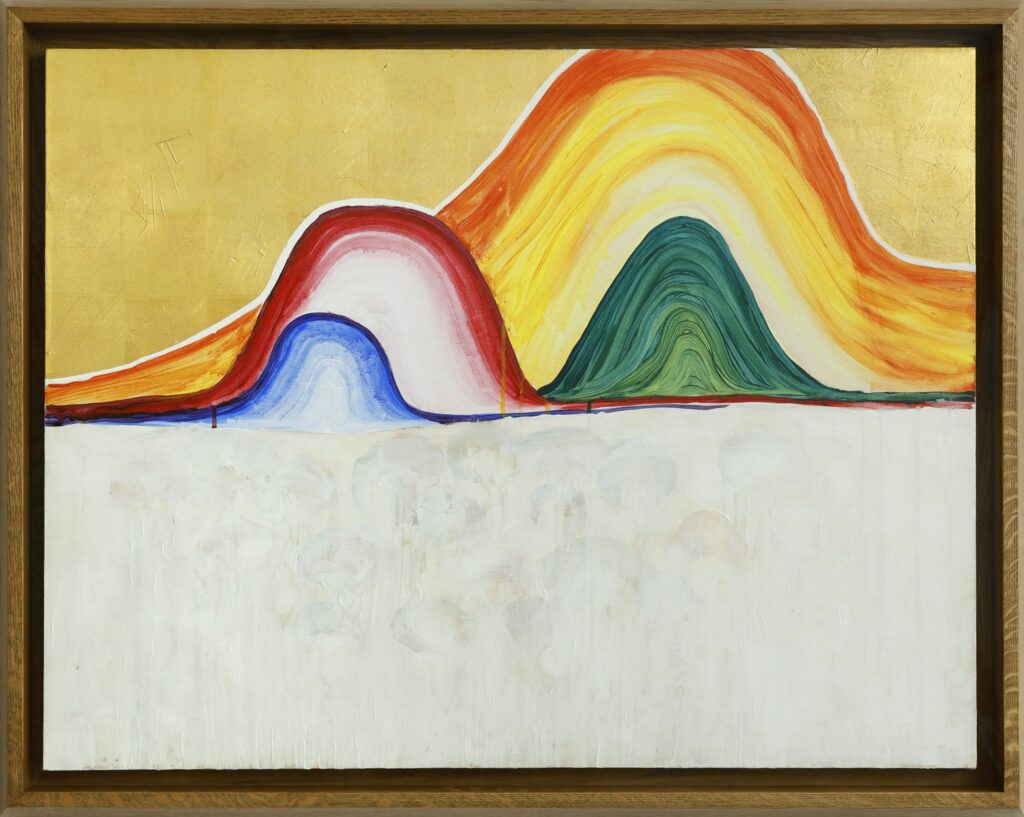Thom Yorke and Stanley Donwood have announced part two of London art exhibition, “The Crow Flies: Part Two” at Tin Man Art Gallery in London on December 6. The exhibition features a series of new paintings that long-term friends and collaborators Yorke and Donwood created together over the past two years.
The exhibition marks a significant moment in a 30-year artistic partnership for Yorke and Donwood, who worked on it together in Oxford and Brighton between 2021 and 2023. It takes its name from Ted Hughes’ poem Crow (1966-69), from which the band name The Smile is also derived, and draws inspiration from the Bodleian Libraries’ collection of Islamic pirate maps and 1960s US military topographic charts.

“The works comprise a mixture of gouache, tempera and powdered mushroom on canvas and feature an extensive language of signs and symbols developed by the artists and codified via supporting imagery.”
The paintings were created with egg tempera, with the layers blended to evoke the weathering of centuries-old art or frescoes. The choice of linen as canvas was intended to recall vellum or parchment. In Donwood’s telling, the idea was to recreate the effect of Medieval murals that had been “repaired by considerably less skilled people”.
While the textures of the works in The Crow Flies depart from Yorke and Donwood’s previous outings, the narratives and motifs that fuel them—haunting abstraction, reimagined artefacts, esoteric terrains—are the same that have informed their decades-long partnership.

Since the early ’90s, Donwood has created the bulk of cover art for Yorke’s musical projects, from Radiohead to Atoms for Peace to his solo work, some of which featured contributions from the singer-songwriter himself. In 2006, the duo’s joint paintings for Radiohead’s 2003 record Hail to the Thief were first exhibited at Iguapop Gallery in Barcelona (with Yorke using the moniker Dr. Tchock). More recently, they curated a showcase of Donwood’s artwork for 2001’s Kid A to accompany a Christie’s auction in 2021.
In working together, Donwood and Yorke have established a shared visual language, one that is perhaps now tough to tease out from their aesthetic. But maybe that’s the point.
“There isn’t a lot of navigating to be done,” Yorke said about balancing their individual and collaborative creativity. “The effort to understand where someone else is coming from—that’s the point. So then when you look back at what you’ve done, it speaks to you in a way you didn’t expect.”

Courtesy of TIN MAN ART
According to the duo, their collaboration seems to thrive on necessary friction. “Essential interference” is how Donwood characterized it, while Yorke called it “Midi/USB,” referring to the opposite heads of a connecting cable commonly used with musical equipment. Yorke’s is an apt analogy. If music is the root and throughline of his and Donwood’s shared visual art practice, it has arguably also served as the glue.









